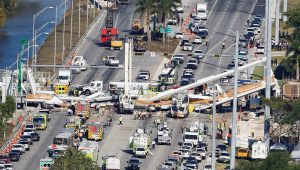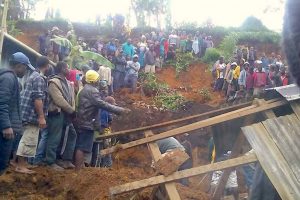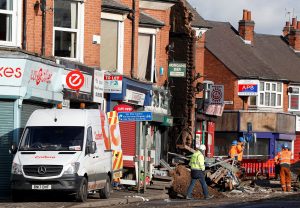
By Tim Ghianni
NASHVILLE, Tenn. (Reuters) – Police hunting for a gunman who fled naked after killing four people at a Nashville Waffle House searched public schools through the night to make sure they would be safe when they reopen on Monday.
All Metropolitan Nashville public schools were searched and will be checked again before school opens, officials said on the department’s Facebook page. Extra security will be in place at school bus stops. Schools will be on “lock-out,” barring all visitors.
“Metro Nashville Public Schools Parents always have the final decision on whether to send their child to school,” the statement said.
Police identified the victims. Slain outside the restaurant in Nashville’s Antioch neighborhood shortly before 3:30 a.m. Sunday were Waffle House cook Taurean C. Sanderlin, 29, and patron Joe R. Perez, 20, police said. Inside, the shooter killed patrons DeEbony Groves, 21, and Akilah Dasilva, 23.
“Please say a prayer for my family for today is the hardest day of my life. Me, my husband and sons are broken right now with this loss. Our lives are shattered,” Perez’s mother Trisha Perez posted on Facebook.
Dasilva’s mother Shaundelle Brooks told CBS News affiliate WTVF her son was a student at Middle Tennessee State University pursuing music engineering: “He meant the world to us. He was humble, kind, compassionate, outgoing and very creative.”
Groves was a Belmont University senior who studied social work and was described by her high school basketball coach Kim Kendrick on CBS News affiliate WTVF as a tenacious player.
Two wounded patrons, Shanita Waggoner, 21, and Sharita Henderson, 24, were being treated at Vanderbilt University Medical Center, both listed in stable condition early on Monday. Others were cut by shattered glass.
One diner, James Shaw Jr., 29, was grazed by a bullet as he hid near a restroom before he wrestled the AR-15 rifle from the gunman, police said. Police credited his action with saving lives. At a news conference, Shaw said he was no hero, adding: “I just wanted to live.”

Travis Reinking, 29, of Morton, Illinois, is shown in this undated photo obtained April 22, 2018. Tennessee Bureau of Investigation/Handout via REUTERS
Metropolitan Nashville Police Field Captain Daniel Newbern said the suspected shooter, Travis Reinking, 29, originally from Tazewell County, Illinois, faces multiple murder charges. Police believe he is still armed with a pistol.
Police disclosed no known motive for the attack by Reinking, who was naked except for a green jacket when he got out of his pickup truck and started shooting.
As the shooter ran off, he discarded the jacket, which contained two additional ammunition magazines for the AR-15, according to police.
(Writing by Rich McKay in Atlanta; Additional reporting by Barbara Goldberg in New York, and Keith Coffman in Denver; Editing by Michael Perry and Bernadette Baum)












